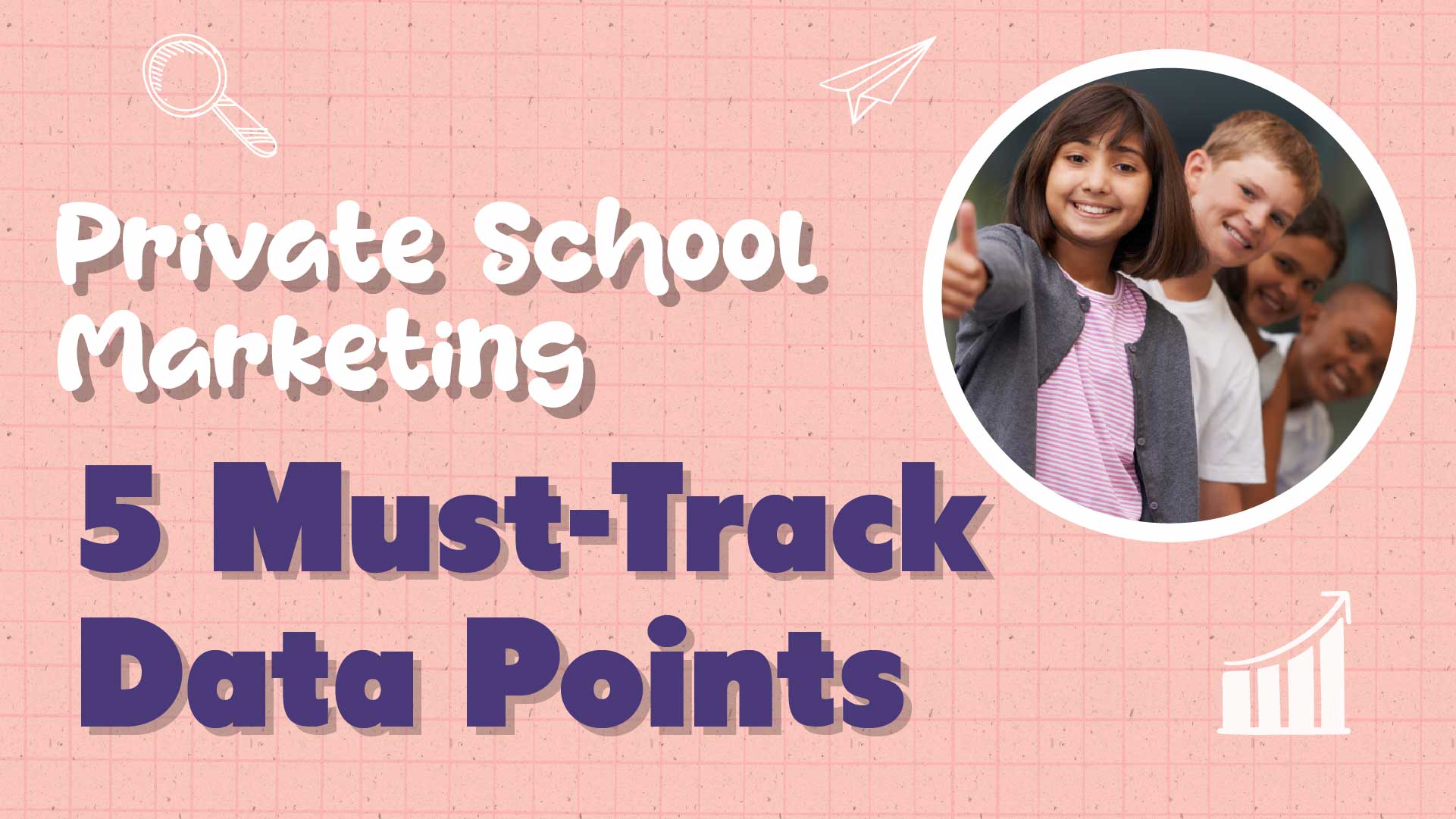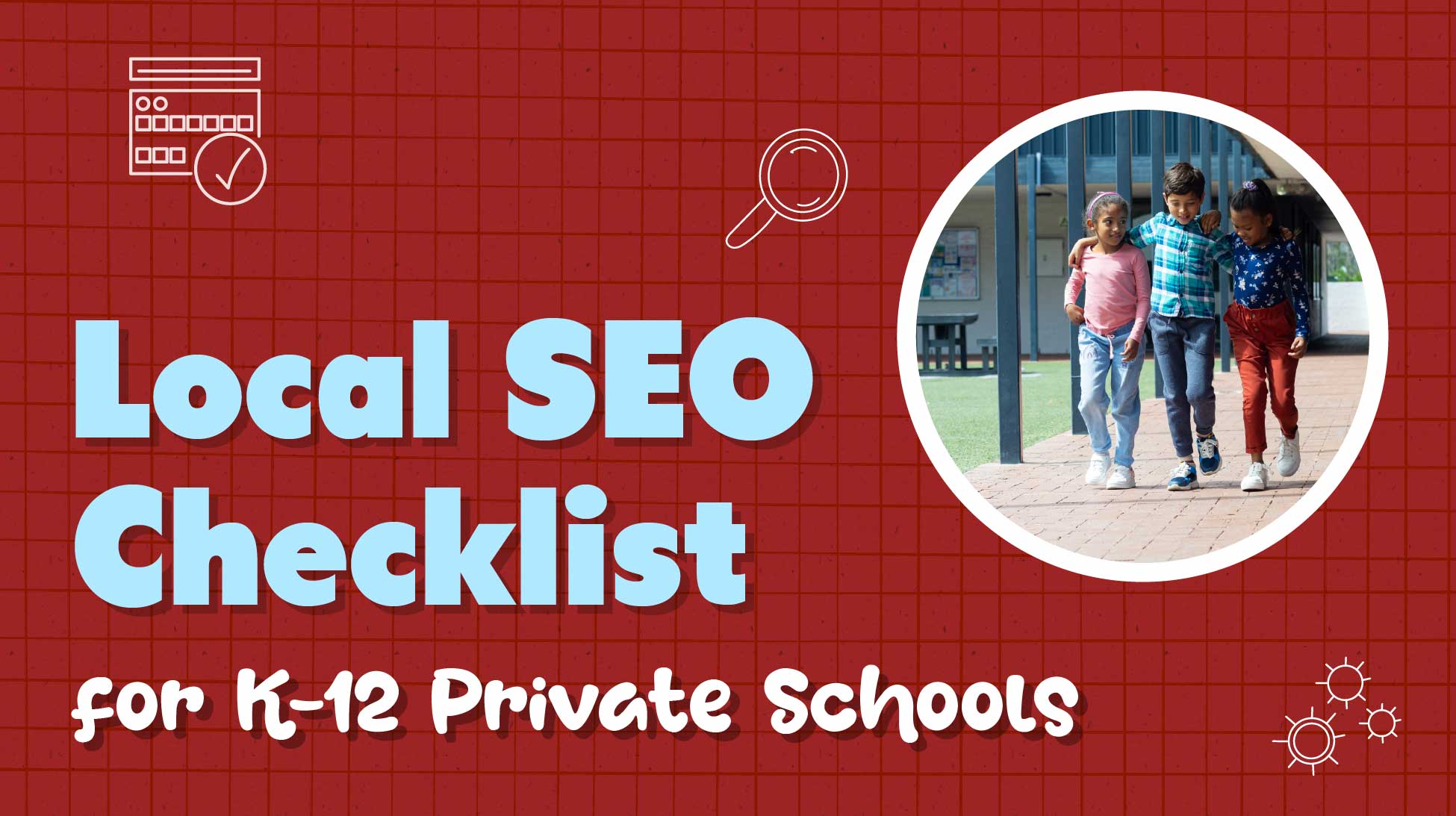If you're wondering why your stellar private school isn't seeing the enrollment numbers it deserves, your website might be the educational equivalent of a pop quiz – catching prospective parents off guard and leaving them unprepared to take the next step. In an era where nearly 9 out of 10 parents start their school search online, your website isn't just a digital brochure; it's your hardest-working admissions officer.
At the fictional Greenfield Academy, Director of Admissions Jordan Grayson faced this exact challenge. "We had an impressive campus, outstanding faculty, and stellar academic outcomes," says Grayson. "But our website was like a maze where prospective parents could find everything except the exit sign pointing them toward enrollment."
Understanding Private School Website Conversion Fundamentals
To transform your website into an enrollment powerhouse, we need to master two critical concepts:
- The mechanics of website conversion in the private school context
- The unique journey parents take when choosing a school
Let's explore each of these in detail.
What is Website Conversion for Private Schools?
Let's drop the jargon sandwich and serve up some clarity: website conversion for private schools is simply turning curious clicks into concrete actions. Whether it's scheduling a tour, requesting information, or submitting an application, these actions are the digital handshakes that begin lasting relationships with prospective families.
Key conversion metrics include:
- Application initiation rate
- Tour scheduling rate
- Information request completion
- Open house registration
- Virtual tour engagement
Industry benchmarks suggest that top-performing private school websites convert at 2-5% for primary calls-to-action. But here's the plot twist: your conversion rate isn't just a number – it's a story about how well your website guides families through their educational journey.
The Private School Parent Journey
Think of your website as a GPS for parents navigating the private school landscape. Unlike impulse purchases or quick-decision services, private school selection is more marathon than sprint. Here's the typical journey:
- Awareness Stage (6-12 months before enrollment)
- Initial school research
- Website first impressions
- Basic information gathering
- Consideration Stage (3-6 months before)
- Deep dive into the curriculum
- Faculty exploration
- Community culture assessment
- Decision Stage (1-3 months before)
- Financial planning
- Application process
- Campus visits and interviews
The key? Your website needs to meet parents at every stage with the right information and appropriate next steps. It's like hosting an open house where every room answers exactly what parents need to know – before they even ask the question.
Essential Website Elements That Drive Enrollment
If your website were a campus tour guide, certain elements would be the equivalent of that charismatic senior who makes families fall in love with your school. Let's explore these mission-critical components that turn casual browsers into enrolled students.
Homepage Optimization: Your Digital First Impression
Remember the last time you wore mismatched socks to a board meeting? Neither do we because first impressions matter. Your homepage is your digital handshake, and it needs to be firm, confident, and inviting.
Key elements for a converting homepage:
- Value Proposition: Position it above the fold, clear as a school bell. Greenfield Academy's "Cultivating Tomorrow's Leaders Through Classical Innovation" immediately tells parents what makes the school unique.
- Navigation: It should be as intuitive as finding the cafeteria at lunchtime. Primary paths (Admissions, Academics, Campus Life) need to be immediately visible.
- Quick Actions: Place high-priority CTAs (Schedule a Tour, Apply Now, Request Information) where they're impossible to miss – like a pop quiz announcement.
Admission Pages: Where Interest Becomes Action
Your admission pages should be like a well-organized syllabus – clear, comprehensive, and impossible to misinterpret. Greenfield Academy increased its application completion rate by implementing these best practices:
- Process Clarity
- Timeline infographic showing key deadlines
- Checklist of required documents
- Clear tuition and financial aid information
- Form Optimization
- Multi-step forms that feel less overwhelming than a summer reading list
- Save-and-resume functionality
- Mobile-friendly design for parents on the go
- Required Documentation
- Downloadable checklist templates
- Sample recommendations and essays
- Digital document upload capabilities
Virtual Tour Integration: Your 24/7 Open House
In an era where parents research schools at midnight (because when else do they have time?), your virtual tour needs to be more than just a slideshow set to inspirational music.
Elements of an Engaging Virtual Experience:
- 360-degree classroom views
- Student life video snippets
- Interactive campus map
- Day-in-the-life recordings
- Faculty introduction videos
Converting Prospective Parents into Applicants
Now that we understand how parents navigate your site let's focus on the two critical elements that turn interested visitors into active applicants:
- Strategic calls to action that prompt engagement at the right moments
- Optimized lead capture forms that make taking action effortless
These components work together like a well-orchestrated admissions event – let's explore how to perfect each one.
Call-to-Action Strategy: The Art of the Ask
Think of CTAs as the final bell of each webpage – they signal it's time for action. Here's how to make them ring clearly:
Primary vs. Secondary CTAs:
- Primary: "Schedule Your Personal Tour" (bold, prominent)
- Secondary: "Download Our Curriculum Guide" (supportive, but not competing)
Button Placement Best Practices:
- “Above the fold” for immediate visibility
- After compelling content blocks
- At natural decision points in the user journey
Action-Oriented Language That Works:
- "Begin Your Child's Journey"
- "Reserve Your Tour Time"
- "Start Your Application"
- "Submit" (about as inspiring as cafeteria mystery meat)
Lead Capture Forms: The Golden Gate to Enrollment
Your forms should be like the best teachers – getting information across efficiently while keeping everyone engaged. Here's how:
- Form Field Optimization
- Ask only what you need (like a concise essay prompt)
- Group-related fields logically
- Use conditional logic to show relevant fields
- Progressive Profiling
- Start with basic information
- Gather more details over time
- Build relationship naturally
- Mobile Responsiveness
- Touch-friendly input fields
- Autofill support
- Landscape/portrait flexibility
Crisis-Proof Communication Strategies
If the past few years have taught us anything, it's that your website needs to be as adaptable as a teacher with a classroom full of different learning styles. When in-person visits become virtual ventures, your digital presence needs to shine brighter than a valedictorian's future.
Virtual Open House Optimization
Transform your virtual open house from a glorified PowerPoint into an immersive experience that makes families feel like they're already part of your community:
- Interactive Sessions
- Live Q&A with faculty and current parents
- Student panel discussions
- Real-time classroom demonstrations
- Virtual campus scavenger hunts
- Technical Excellence
- Multi-camera setups for dynamic viewing
- Professional audio quality
- Moderated chat functions
- Recording options for future reference
Remote Tour Experiences
Make your virtual tours more engaging than a senior's college acceptance reaction video:
Essential Elements:
- Drone footage that captures campus energy
- Student-guided walkthrough videos
- Interactive hotspots on 360° photos
- Live tour guide scheduling options
Digital Admission Interview Best Practices
When face-to-face becomes screen-to-screen, make your digital interviews feel as personal as a handwritten acceptance letter:
- Technical Setup
- Professional virtual backgrounds
- Lighting and audio guidelines
- Backup communication plans
- Practice session options
- Interview Experience
- Digital icebreakers
- Virtual classroom visit integration
- Student ambassador video chats
- Follow-up digital packages
Advanced Conversion Optimization Techniques
You've mastered the basics - now it's time to take your website optimization to the honors level with two advanced strategies:
- Data-driven A/B testing to continuously improve performance
- Personalized content that speaks to different audience segments
Think of these techniques as your website's advanced placement program. Let's explore how to implement them effectively.
A/B Testing Framework: Your Data-Driven Compass
Like grading on a curve, A/B testing helps you understand what really works. Here's your testing syllabus:
What to Test:
- CTA button colors and text
- Form field arrangements
- Content hierarchy
- Image placement
- Value proposition messaging
Testing Protocol:
- Identify conversion goals
- Create hypothesis
- Run concurrent tests
- Analyze results
- Implement winners
Content Personalization: Speaking to Your Audience
Just as you differentiate instruction in the classroom, your website should adapt to different visitor needs:
- Demographic Targeting
- Grade-level specific content
- Parent vs. student-focused sections
- Local vs. international family resources
- Behavioral Adaptation
- Return visitor recognition
- Interest-based content suggestions
- Custom CTAs based on browsing history
Technical Optimization for Conversion
Even the most compelling content won't convert if your website's technical foundation isn't honor-roll worthy. Let's focus on two critical technical elements that directly impact your conversion rates:
- Lightning-fast page speed that keeps impatient parents engaged
- Intuitive user experience that makes navigation second nature
Think of these as your website's infrastructure - like having well-maintained classrooms and clear hallway signs. Let's optimize each component.
Page Speed: Because Waiting is So Last Semester
If your website loads slower than a freshman finding their first class, you're losing families before they even see your value proposition:
Speed Optimization Checklist:
- Image compression (without sacrificing quality)
- Browser caching implementation
- Code minification
- Server response time optimization
- Content Delivery Network (CDN) usage
User Experience Enhancement: Making Navigation a Joy
Your website should be as intuitive as finding the principal's office (when you're not in trouble):
- Navigation Patterns
- Clear menu hierarchies
- Breadcrumb trails
- Search functionality
- Quick links to key pages
- Cross-Device Compatibility
- Responsive design
- Touch-friendly elements
- Consistent experience across devices
Frequently Asked Questions: Your Conversion Cheat Sheet
Before you tackle your website optimization journey, let's address the most common questions we hear from school administrators and marketing teams. Think of this as your study guide – complete with all the key concepts you'll need to ace your website conversion strategy.
We'll cover everything from baseline metrics to maintenance schedules, organized into seven essential questions that every school leader should be able to answer.
What is a good conversion rate for private school websites?
Like comparing SAT scores, context matters. While the industry average hovers around 2-3%, top-performing schools see rates of 4-6% for primary conversion actions.
How can I improve my school website's conversion rate?
Think of it as academic improvement – start with a baseline assessment, implement strategic changes, and measure results. Key areas:
- Clear value proposition
- Streamlined navigation
- Optimized forms
- Compelling CTAs
- Mobile responsiveness
- Regular content updates
What metrics should private schools track for website performance?
Track these KPIs like you would track student progress:
Primary Metrics:
- Application completion rate
- Tour scheduling conversion
- Information request submissions
- Time on site
- Pages per session
Secondary Metrics:
- Bounce rate by page
- Form abandonment rate
- Click-through rates
- Return visitor percentage
- Device type distribution
How often should private schools update their website content?
Like curriculum planning, website updates should follow both a regular schedule and respond to immediate needs:
- Weekly: News and events
- Monthly: Student/faculty spotlights
- Quarterly: Program highlights
- Annually: Core content review
- As needed: Crisis communications, policy updates
What are the most effective CTAs for private school websites?
The best CTAs are like well-crafted essay prompts – clear, actionable, and compelling:
Top Performing CTAs:
- "Schedule Your Personal Tour"
- "Begin Your Application"
- "Download Our Curriculum Guide"
- "Reserve Your Open House Spot"
- "Chat With Our Admissions Team"
How do I know if my website changes are working?
Monitor these key indicators monthly:
- Conversion rate trends
- Time to the first conversion
- Multi-touch attribution
- User flow patterns
- Heat map analysis
What role does mobile optimization play in conversion?
With over 60% of initial school research happening on mobile devices, mobile optimization is crucial. Focus on:
- Touch-friendly navigation
- Responsive forms
- Quick-loading pages
- Readable text without zooming
- Click-to-call functionality
Conclusion: Your Roadmap to Digital Enrollment Success
Converting website visitors into enrolled students isn't rocket science (leave that to your excellent STEM program). It's about understanding your audience, providing value, and making it ridiculously easy for them to take the next step.
Remember Jordan Grayson from Greenfield Academy? After implementing these strategies, their website became their most effective admissions tool, contributing to an increase in qualified applications and a boost in enrollment yield.
Your website should work as hard as your faculty does to showcase your school's value. By implementing these strategies, you're not just optimizing a website – you're creating a digital open house that never closes.
Your Next Steps
- Audit your current website against this guide
- Prioritize quick wins and long-term improvements
- Implement changes systematically
- Monitor and measure results
- Adjust strategies based on data
Ready to transform your school's digital presence? Contact me today; my team of education-focused web optimization experts and I are here to help you turn your website into your most effective admissions tool.
Remember: In the digital age, your website isn't just part of your school's first impression – it is your first impression. Make it count.





